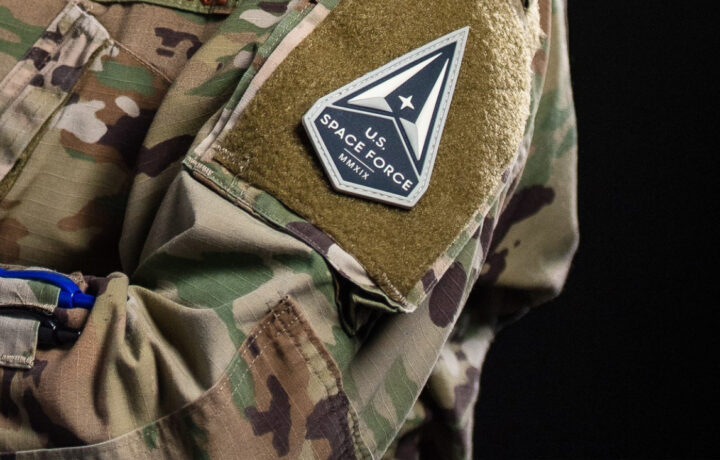The United States Space Force has a “failure to launch” situation – not with its satellites, but rather with its mission statement. The sixth and newest branch of the United States Armed Forces remains a mystery to many, and an issue remains on exactly what the service does.
“The USSF is responsible for organizing, training, and equipping Guardians to conduct global space operations that enhance the way our joint and coalition forces fight, while also offering decision-makers military options to achieve national objectives,” reads the current mission statement.
Complementing this are three “Lines Of Effort” (LOE) that further state:
LOE 1 – Fielding Combat-Ready Forces
LOE 2 – Amplifying the Guardian Spirit
LOE 3 – Partnering to Win
The issue of the current mission statement wording is so great that even its top general expressed concerns earlier this week, Politico.com first reported. Chief of Space Operations Gen. Chance Saltzman, in a note to all guardians – Space Force service members – on Monday, explained that the three-year-old service’s current mission statement falls well short of explaining its mission, or even exactly what it does.
“I have some concerns with our current mission statement,” Saltzman wrote. “My biggest concern is that the mission statement does not reflect why the Nation has a Space Force and the vital functions Guardians perform.”
Small Force, Big Mission
The United States Space Force is the space service branch of the U.S. Armed Forces and is part of the Department of the Air Force, one of the three civilian-led military departments within the Department of Defense. More than three years after it was officially created, it remains the smallest U.S. armed service and currently consists of approximately 8,600 military personnel.
It also operates 77 spacecraft in total across various programs that include GPS, Space Fence, military satellite communications constellations, X-37B spaceplanes, U.S. missile warning system, U.S. space surveillance network, and the Satellite Control Network.
In addition to not actually making clear what the U.S. Space Force’s role within the DoD actually is, it could be argued that the mission statement only reflects a small portion of what the guardians actually do.
“Guardians deliver capability,” Saltzman wrote. “Guardians operate some of the most technologically advanced systems in the world. In doing so, they deter aggression and, should deterrence fail, protect U.S. interests with military force. Additionally, our current mission statement is long and cumbersome. We can do better.”
The United States Space Force is the branch of the U.S. military that oversees space equipment, but also tracks missiles, monitors satellites, launches around the globe, and even orbital debris.
Saltzman suggested one problem is that the current mission statement isn’t catchy enough.
“How many Guardians can recite the current mission statement of the Space Force?” he asked. “My guess is very few.”
Military Mission Statements
In fairness, it could be argued that mission statements for many companies could be described as a word salad, as these often try to be overreaching while not saying too much. When it comes to the U.S. Armed Services, Space Force is hardly alone in mission statements that don’t make it all clear what the respective service does.
“To deploy, fight and win our nation’s wars by providing ready, prompt and sustained land dominance by Army forces across the full spectrum of conflict as part of the joint force,” reads that of the U.S. Army. “The Army mission is vital to the Nation because we are the service capable of defeating enemy ground forces and indefinitely seizing and controlling those things an adversary prizes most – its land, its resources and its population.”
Likewise, the United States Marine Corps mission statement suggests, “The Marine Corps mission reflects every Marine’s purpose. In essence, our Nation is that purpose. In our world, in ourselves, and in our way, there are conflicts, challenges, and obstacles that must be fought confidently and defeated convincingly for our Nation to prevail. These looming battles come in many forms and occur on many fronts, but each comes down to a critical choice: to demand victory or accept defeat. To pull together or fall apart. To give in or cave in. It is a decision each Marine conveys to our Nation with each battle won.”
By contrast, the U.S. Navy and U.S. Air Force arguably each do a better job of stating their respective purpose.
“The United States is a maritime nation, and the U.S. Navy protects America at sea. Alongside our allies and partners, we defend freedom, preserve economic prosperity, and keep the seas open and free. Our nation is engaged in long-term competition. To defend American interests around the globe, the U.S. Navy must remain prepared to execute our timeless role, as directed by Congress and the President,” reads the Navy’s statement.
That does seem to explain the role of the Navy. The Air Force’s statement is as clear.
“The mission of the United States Air Force is to fly, fight and win – airpower anytime, anywhere. Whether full time, part time, in or out of uniform, everyone who serves plays a critical role in helping us achieve mission success,” is the mission statement of the Air Force, the sister branch of the Space Force.
Clarifying the Mission
While perhaps Space Force could simply look to these other mission statements, Saltzman is going in another direction and called upon guardians to send in their own submissions. He essentially was seeking to “crowd-source” the change, which has been employed in the past with everything from the name for its servicemembers to its service song.
Politico reported that Saltzman will consider four attributes when crafting the new mission statement. The new mantra must be informative, memorable, inclusive, and receive buy-in.
Looking to what seems to work with the other branches (and what doesn’t) might be a good start.




